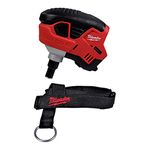Thoughts On Hardwood Decking
Experienced deck builder Andy Engel shares his insights into why you might consider tropical hardwoods and what you should know before working with them.

Before I became an editor two decades ago, I built something like 50 decks, every one of them with pressure-treated southern-pine decking. That was pretty much the only choice then. The decking world has changed a bit since. Treated pine still has the largest market share, but both hardwood decking and plastic decking have steadily eroded it.
Hardwood and plastics have advantages and disadvantages, not the least of which is sorting out the players. Today’s blog isn’t about plastics, a moving target composed of proprietary products that can change at the whim of a manufacturer. Hardwoods are different, though. Although they’re a little boutiquey, hardwoods are still a commodity: Ipé’s formulation never changes. Still, what’s the difference between ipé and, say, garapa gold? It can be hard to tell by looking, but the website of East Teak, a hardwood supplier, offers up a concise description of the common tropical hardwoods.

Finally, there’s the question of whether tropical hardwoods are harvested sustainably. The Forest Stewardship Council (FSC) provides a certification program that might ease any concerns you have. On the other hand, the FSC has been roundly criticized by organizations such as Greenpeace. Where you come down on this issue is a personal choice.
Fine Homebuilding Recommended Products
Fine Homebuilding receives a commission for items purchased through links on this site, including Amazon Associates and other affiliate advertising programs.

Lithium-Ion Cordless Palm Nailer

Metal Connector Nailer

Cepco BoWrench Decking Tool






View Comments
The current deck at my house is failing not due to a fialure of the surface (2x6 clear redwood) but because the sub-structure is rotting out. You mention that a hardwood deck might last half a century or more. It is certainly appealing to think that I might only build one more deck that will last my entire lifetime. However, what do you recommend one should do differently with the sub-structure to take advantage of the longevity of the deck surface? Of particular note, we have a large pergola with WIsteria that sheds leaves and debris regularly. "Flossing" the deck is currently tedious but necessary.
If you want to retain that pretty color...plan on refinishing that deck every year, otherwise it simply turns the typical gray like decking a fourth of the price. If you want a colored deck, resin is the best way to go because eventually that hardwood gray dolor is foing to get ahead of you.
For the cost, and time it takes to install hardwood decking...you can install at the very least, four resin decks. Take it from someone who has installed several hardwood decks at customer insistance...they simply are not worth it. Spend the money you'll save on installing a resin deck...hire it done, and vacation in Hawaii while it's being installed.
OldSaw, I'm pretty sure I didn't say a deck could last half a century or more. There are a lot of variables. In any event, you raise a good point about the framing rotting out. Some climates are really hard on wood, treated or not. Moisture and warmth foster the growth of decay organisms. If you live west of the Rockies, there's also the fact that your pressure treated hemlock or Doug fir framing doesn't take the treatement as well as the southern pine we get in the east. That's why your lumber is incised - to aid in the penetration of the stain.
In general, and more so in the west, the larger the size of the piece of wood, the more likely it is that the preservatives won't reach the center. Fasteners let water in and rot can start, and cuts expose untreated lumber. All cuts in any pressure treated wood should be treated with an end-cut preservative like Wolman's CopperCoat.
Build decks so they can dry out - That is, well off the ground. Cover the top of the joint where the members of a beam come together with Vycor or some similar product to keep water from getting in. Cover the tops of the joists similarly. Bituminous tapes like Vycor seal around the fasteners and help keep water out. Be sure to properly flash the joint at the house.
Another alternative is to consider a galvanized steel frame.
I said "stain" in my comment. I meant "preservative".